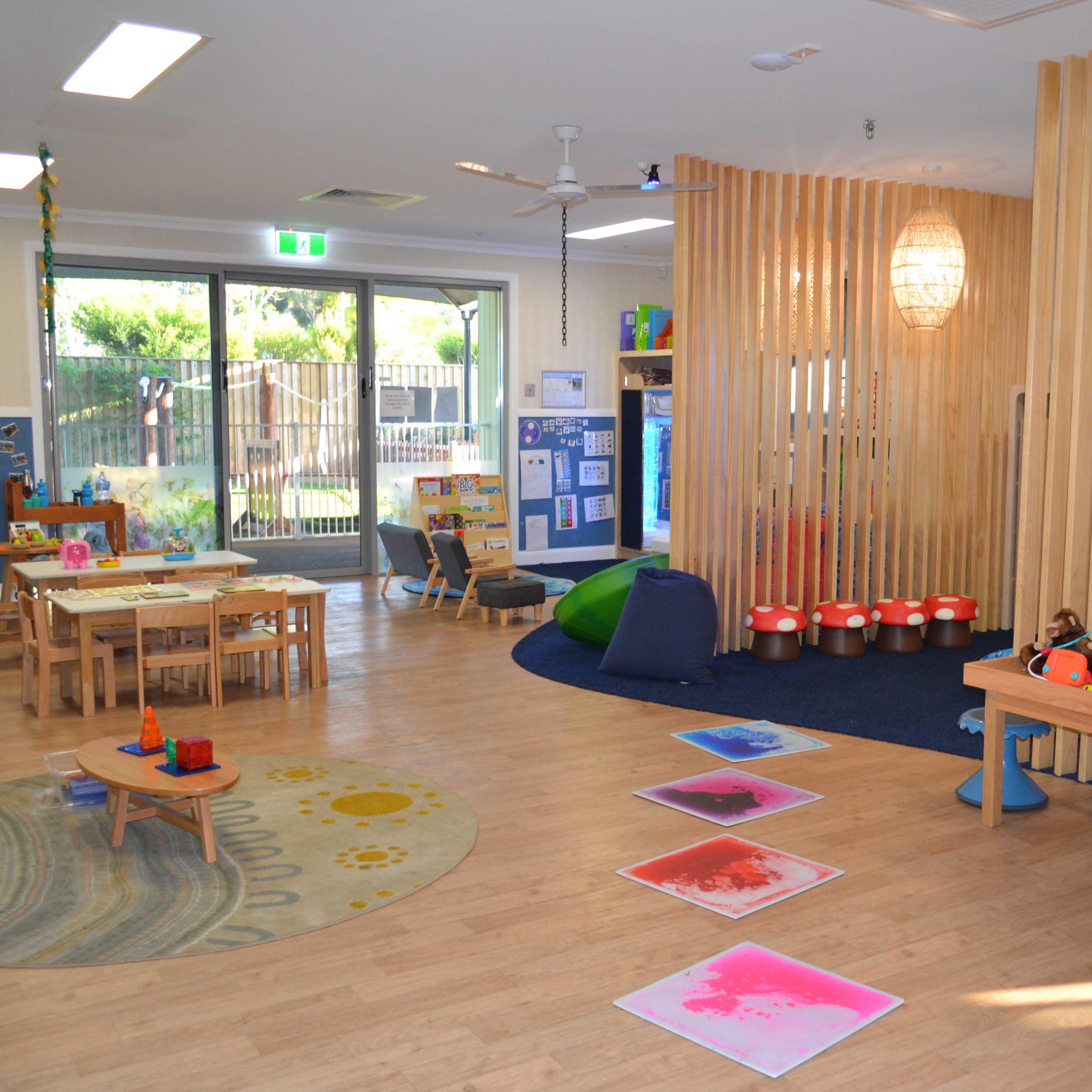Sensory studio | Home studio: To prepare for the day; it is predictable
The ACE Studio supports and prepares children for their day in the ACE (Autism Connect Early) Programme. As children share in meaningful participation experiences throughout the community environment of the centre, it is important that they are able to begin their day in the ACE Studio – their home studio; and return to this space as required throughout the day.
Necessary adjustments within the overall centre environment have been made to support the needs of autistic children in an early childhood education and care setting. Sometimes the adjustments that can be achieved in mainstream early education environments are not adequate to meet the needs of some children due to complex sensory environments created by large groups of children and the adult to child ratios that are maintained.
The ACE Studio offers predictability which is important for autistic children. It supports their learning and focus, it contributes to a positive mind set and ensures that their sensory needs and emotional regulation support requirements are met, which in turn supports their ability to learn.
The idea that meeting sensory needs and setting the right mindset can enhance learning for autistic children is supported by several key theories and research in developmental psychology and education.
Theoretical Background
1. Sensory Integration Theory (Jean Ayres): Jean Ayres developed this theory, which posits that sensory processing is crucial for effective learning and behaviour. According to Ayres, children with sensory processing differences may struggle with attention, coordination, and learning because their brains have trouble organising and making sense of sensory information. Creating an environment that addresses these sensory needs can help improve focus and learning outcomes.
2. Neurodiversity Paradigm: This approach emphasises that neurological differences, such as autism, are part of natural human variation. Advocates like Judy Singer argue that rather than trying to ‘normalise’ autistic individuals, educational practices should be adapted to support their unique ways of processing and interacting with the world. This paradigm supports tailoring educational environments to meet sensory and cognitive needs.
3. Theory of Mind (Simon Baron-Cohen): Simon Baron-Cohen’s research on Theory of Mind explores how individuals understand and predict others’ thoughts and feelings. For autistic children, challenges in this area can impact social interactions and learning. Creating a supportive and structured environment can help mitigate these challenges, fostering better learning and engagement.
4. Ecological Systems Theory (Urie Bronfenbrenner): Bronfenbrenner’s theory emphasises the importance of various environmental systems on an individual’s development. A well-designed studio that considers sensory and emotional needs fits within this theory, creating a supportive micro-environment that positively influences learning.
5. Self-Determination Theory (Edward Deci and Richard Ryan): This theory focuses on the importance of autonomy, competence, and relatedness in motivation. For autistic children, providing environments that meet sensory needs and support their individual preferences can enhance their sense of competence and autonomy, which are crucial for effective learning.
Practical Applications
Sensory-Friendly Environments: Creating spaces that are free from overwhelming sensory stimuli (e.g. bright lights, loud noises, unpredictable movements) and offering sensory experiences that are calming or engaging can help autistic children feel more comfortable and ready to learn.
Structured Routines: Implementing clear, predictable routines can help reduce anxiety and improve focus. Consistent schedules and visual supports can aid in this process.
Individualised Learning Approaches: Tailoring educational approaches to each child’s unique sensory and cognitive needs, rather than applying a one-size-fits-all model, can enhance engagement and learning outcomes.
By integrating these theories and practices, educators can create a supportive and effective learning environment for autistic children.




